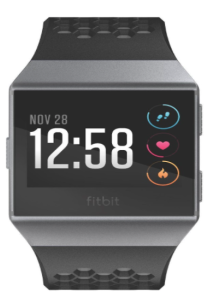 It’s those lithium-ion batteries again. Reminiscent of Samsung’s exploding Galaxy Note 7 (and recently on fire Galaxy A21), Google’s Fitbit on Wednesday recalled 1.7 million Fitbit Ionic watches worldwide. In the US, there were 115 incidents reported with 78 burn injuries, including two reports of third-degree burns and four reports of second-degree burns. Internationally, there were 59 overheating incidents reported with 40 burn injuries.
It’s those lithium-ion batteries again. Reminiscent of Samsung’s exploding Galaxy Note 7 (and recently on fire Galaxy A21), Google’s Fitbit on Wednesday recalled 1.7 million Fitbit Ionic watches worldwide. In the US, there were 115 incidents reported with 78 burn injuries, including two reports of third-degree burns and four reports of second-degree burns. Internationally, there were 59 overheating incidents reported with 40 burn injuries.
The popular Ionic fitness and smartwatch sold about 1 million in the US and 693,000 internationally from September 2017 to December 2021. Fitbit stopped producing the Ionic in 2020. There are four models in four color combinations, including an Adidas edition. According to the US Consumer Product Safety Commission (CPSC) recall notice, owners should stop using the Ionic and contact Fitbit to receive pre-paid packaging to return the device. Upon receipt, owners will be refunded $299 with a discount code for 40% off five select Fitbit devices and accessories available through Fitbit’s discount store for a limited time. Original cost of the watch ranged online and at retail outlets from $200 to $330.
The Fitbit help page has the details on where to mail the watches, refund, and discount. And disposal if one doesn’t care to return it.
Do expect there will be some kind of a class-action suit against Google/Fitbit–the combination of injury and deep pocketed defendants is a magnet. Fox Business News







Most Recent Comments